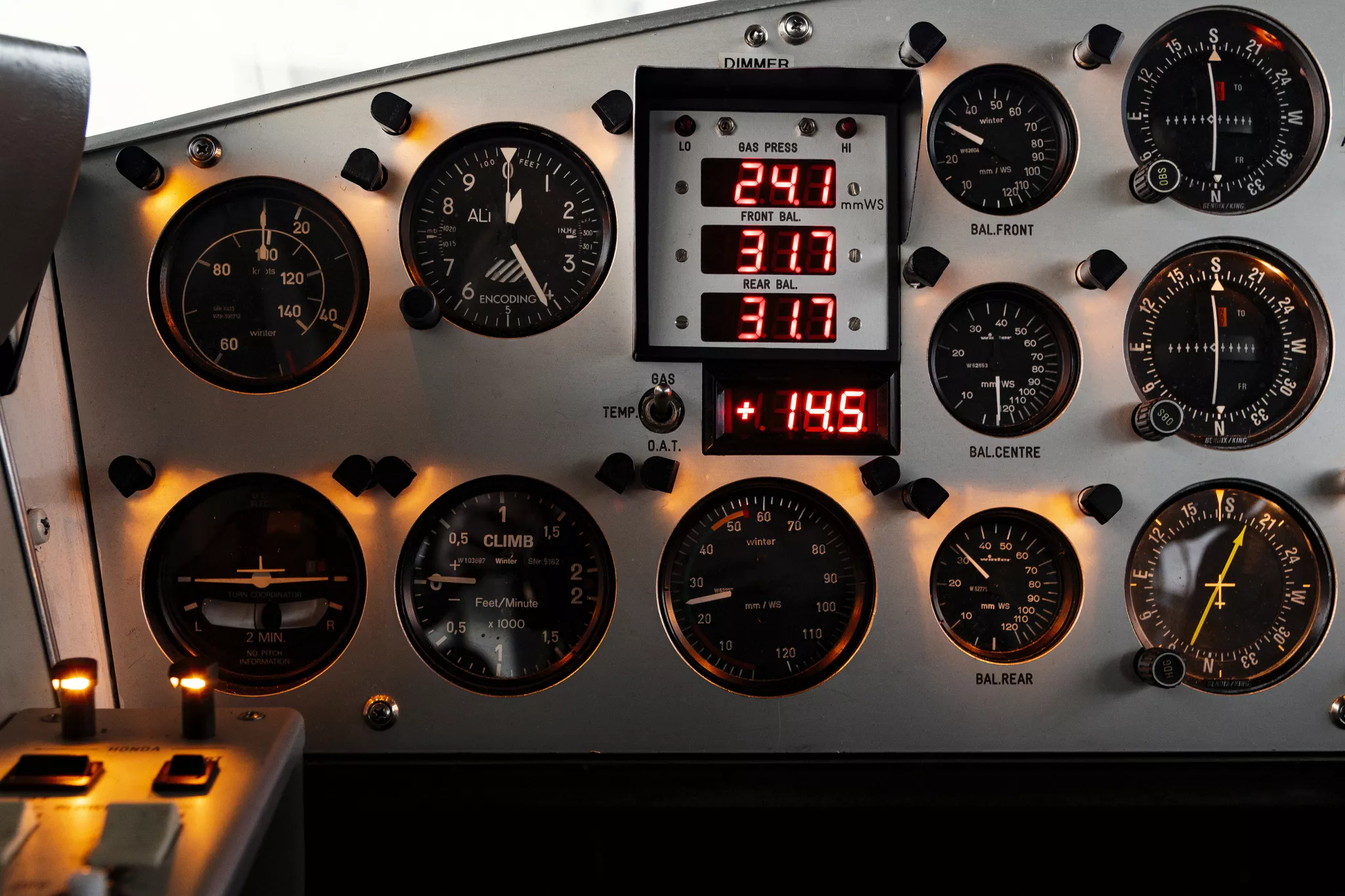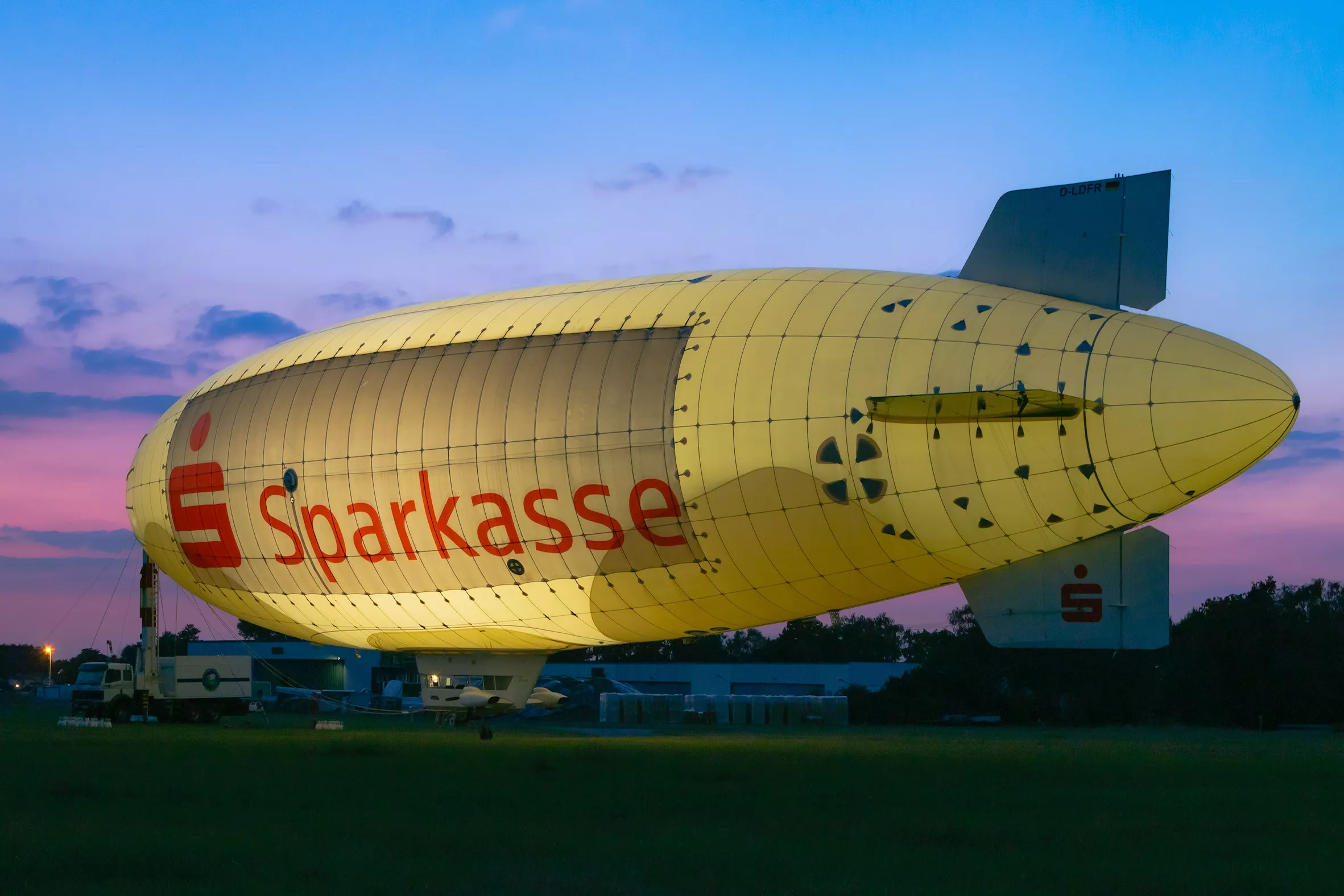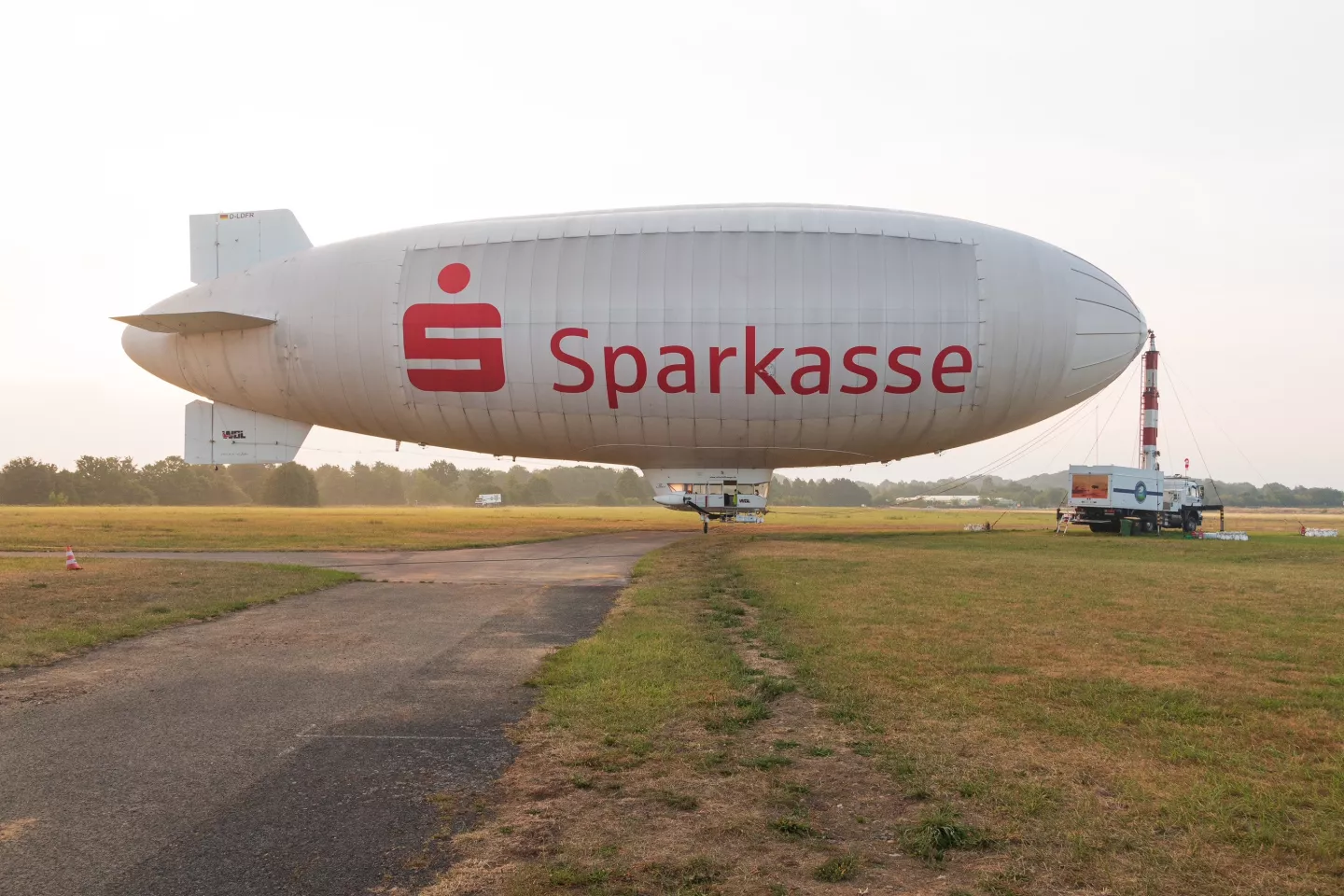Information about pressure in the aiship
To ensure that the pilot always has all the information about the pressure inside the airship, digital displays from the measurement specialist Althen are installed in the cockpit and have been ensuring that Theo flies safely for more than 30 years. The bulging missile of such an airship reacts sensitively to steering movements and can thus be steered very precisely. Any loss of pressure, on the other hand, makes manoeuvring more difficult - and thus potentially less safe. Therefore, the top priority for the safe operation of any airship is to keep the pressure in the interior constant. This is ensured by three ballonetts in the interior, which are filled with air and whose contents are variable to compensate for the pressure fluctuations of the large interior. The pressure in the ballonets is always higher than the external air pressure in order to keep the entire body filled to the brim. This overpressure is only a few millibars, which shows how important precise pressure measurement is. Every airship must have a pressure monitoring system. In the case of Theo, a simple mechanical pointer instrument (manometer) was initially used.
In Althen, we found a partner who was able to develop a three-channel system that suited us



Digital pressure indicator as redundant complement
In 1988, Althen developed the Triple Press Indicator on behalf of WDL Luftschiffgesellschaft for Theo and other WDL airships. TPI is a three-channel system consisting of differential pressure sensors and a display unit with limit value monitoring. A sensor is mounted in the outer hull and in each of the three ballonets, which is connected to the display via a cable and can thus show the measured value. Using these displays, the pilot operates the valves of the individual pressure chambers and thus controls the airship. All displays are combined in a compact display so that the pilot can see the pressure conditions in the entire airship at a glance. In addition, there is another measuring channel as a single-channel system.
„Auf dem Markt gab es seinerzeit kein System, das unsere Anforderungen erfüllen konnte“; beschreibt Hans Peter Gomolzig, vom Luftfahrtbundesamt anerkannter Accountable Manager für die Technik bei WDL, die damalige Situation. „Mit Althen haben wir einen Partner gefunden, der ein für uns passendes Dreikanalsystem entwickelt konnte.“ Die Differenzdruckaufnehmer von Althen verfügen über einen extrem kleinen Messbereich von nur 125 mm Wassersäule, das entspricht etwa 12,3 Millibar.
Pressure transducers based on LVDT
The static system pressure at Theo is 14 bar. The fact that the measuring range is very small compared to the system pressure places special demands on the pressure transducers used, which are based on the LVDT principle (LVDT = Linear Variable Differential Transformer), which is very precise and robust. A wear-free LVDT displacement transducer measures the deformation of the pressure diaphragm; the transducer signal is then converted into an industrial standard signal. In conjunction with the high-resolution digital display, the pressure measurement and display enables significantly more precise manual regulation of the airship's valves required for control compared to the additional mechanical display.
Other possible applications
In industry, differential pressure measurement is often used for leakage measurements. The principle is also valuable in the areas of air-conditioning and energy management, for example to measure the degree of contamination of filters. Differential pressure measurement is also used in clean rooms to monitor whether there is constant overpressure.
-
Safe flying for all passengers30
years
-
Working together14
years
-
Measurement reach pressure sensor12
mb

